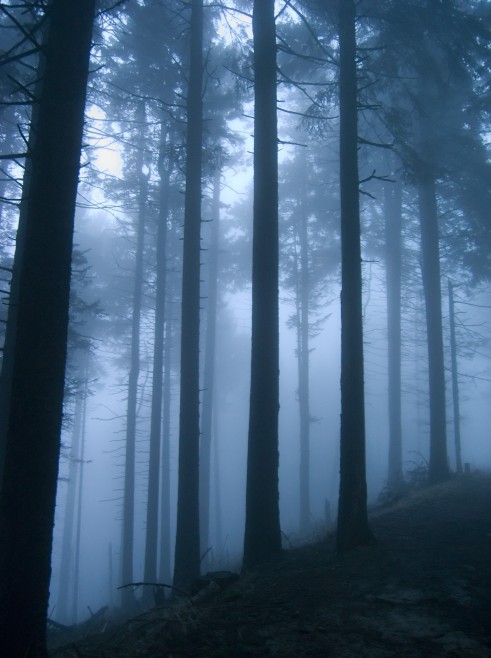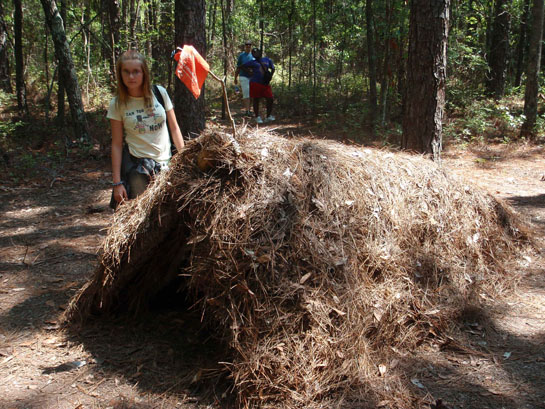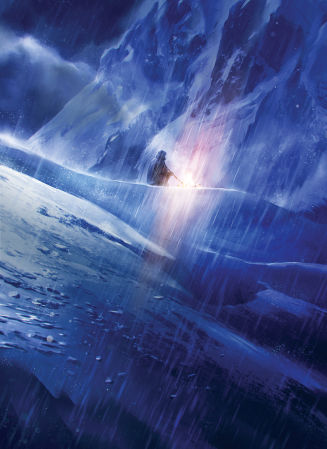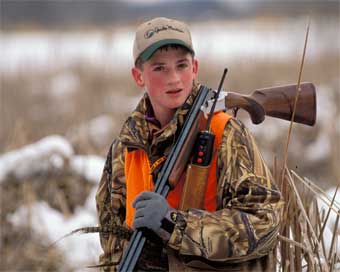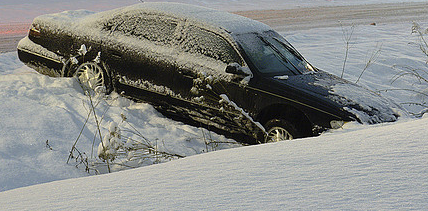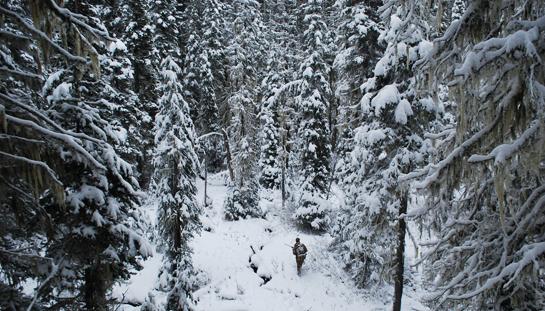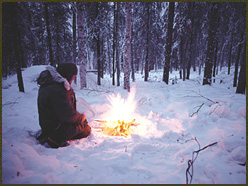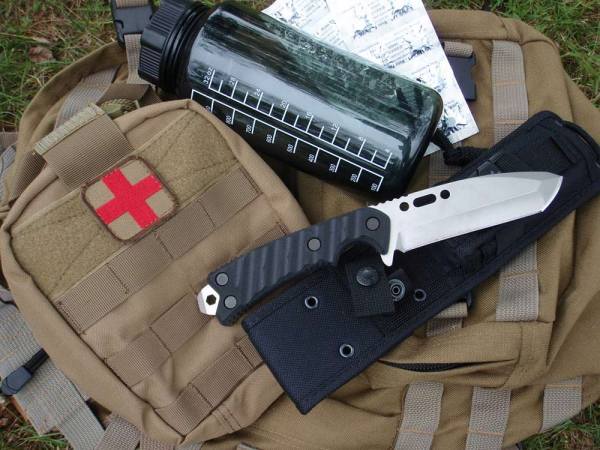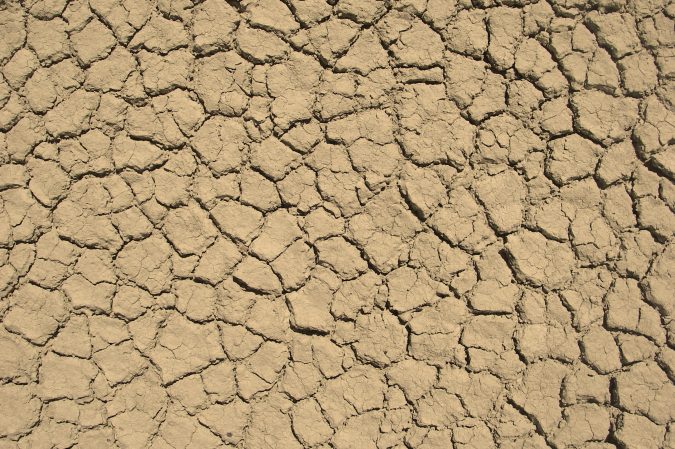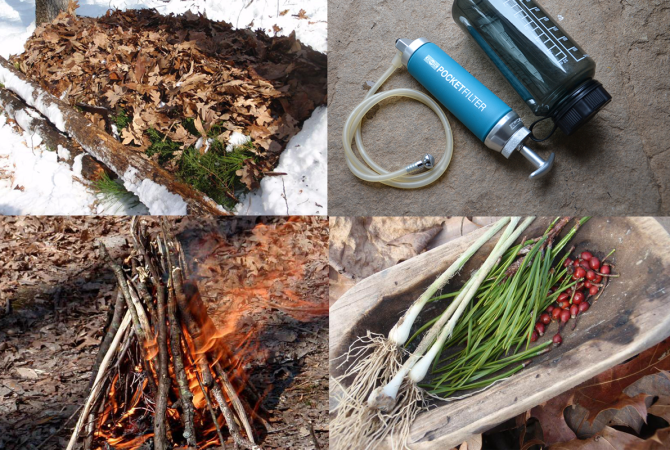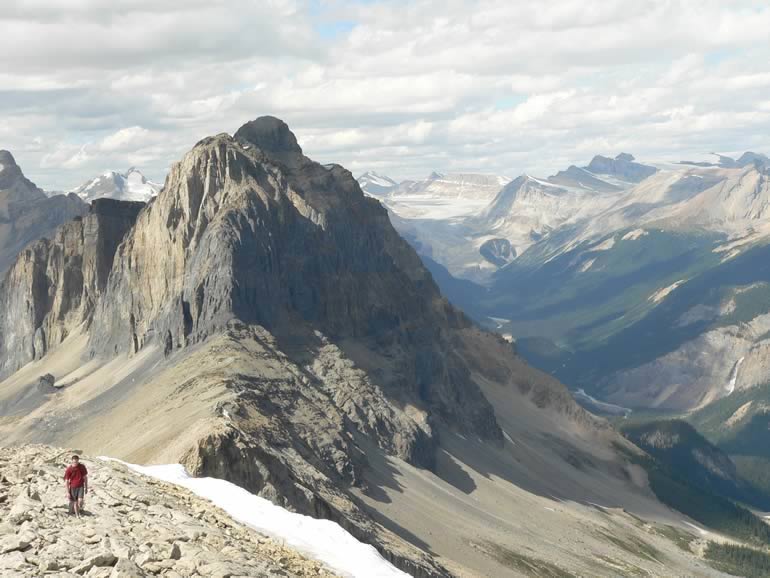
- Underestimating the risk
Survival situations often begin as nothing more imposing than a day hike in familiar territory. You take off down a pleasant path that you’ve hunted many times before, so you’re confident that nothing can go wrong. My file cabinet is full of stories that begin just like that … then something DOES go wrong (an unexpected snowstorm blows in, you step off the trail and twist your ankle badly, clouds descend and wrap everything in dense fog and you get disoriented, a snake bites, a cougar attacks, a bear steps out of the brush and takes a swipe at you, etc.), and the whole thing ends up in the headlines as a survival incident. Part of the problems is that we tend to overestimate our abilities. That’s because most of us have never been tested to the extreme, so we don’t really know what our abilities are. It’s the shortage of experience that leads to a lack of good judgment, and that leads to disaster. And the rest of the problem is that we underestimate the risks posed by an unpredictable lady called Mother Nature.
The solution to this problem is to always expect the unexpected. Have a plan of action to cover every contingency. If you’re in bear country, expect to encounter bears. Take precautions (make noise to alert bears that you’re in the area); use your nose, eyes and ears to alert you to the possible presence of bears; and learn how to respond to a bear confrontation.
The same goes for every other potential risk. Anticipate the worst, and carry appropriate survival gear to get you through a few unexpected nights in the woods, if conditions deteriorate or you become stranded for any reason.
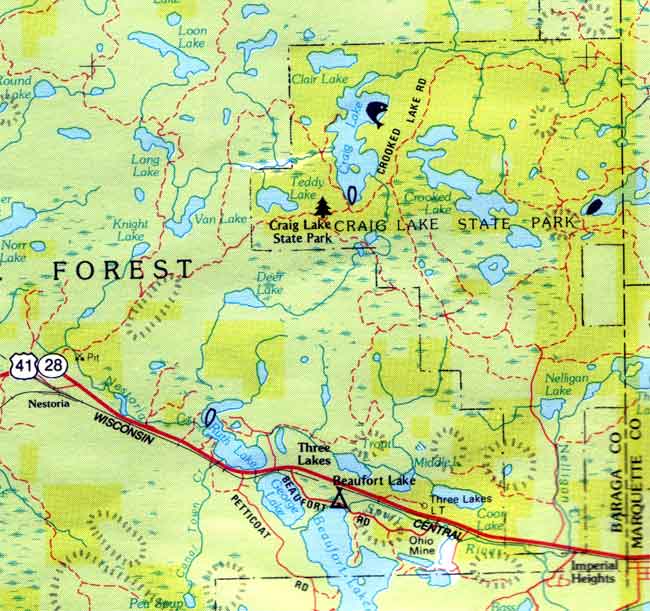
2. Poor route selection
Choosing a poor route, as you move through the wilderness is a recipe for disaster. Outdoorsmen of little experience or poor judgment will sometimes opt for a shorter route between two points, even if it poses greater risk than would be faced if a longer route were chosen. This poor judgment is even displayed on TV these days, as the host of a popular program that touts itself as pitting man vs. the wild foolishly climbs down the face of a waterfall, using a vine as his rappelling rope, when he could have (and should have) hiked farther and taken a different route. Or he scrambles pell-mell down a scree slope, hooting and hollering like a child who has no understanding of the potential consequences. To top it all off, he boldly advises his viewing audience that he is showing them how to survive in an extreme environment. This is not good survival education, and it’s going to get somebody hurt.
In the wilderness, if you become injured, a survival situation has begun. You simply can’t afford an injury, especially if you are alone. And if you’re in company with others, your injury puts the whole group at heightened risk. It slows everyone down, and the contribution you would have been able to make, had you remained healthy, is diminished. Always search out and use the route that poses the least risk of injury.
A companion to choosing the best route is to move at a safe pace. On the aforementioned TV show, the host foolishly moves across the landscape as if he’s in a race, running through uneven terrain, jumping into space to grab a limb, leaping from boulder to boulder. Moving too fast is asking for trouble in the form of injury and/or exhaustion. Slow down, place your feet carefully, maintain your balance, relax so you don’t expend energy needlessly, and move at a pace that keeps you from sweating.
3. Inability to build a suitable shelter
The word commonly used by the media when describing someone who failed to survive an episode in the wilds is exposure, as in “The man died of exposure.” But what they’re really saying is that the victim died of hypothermia. That’s the big killer in the cool season. In hot weather, it’s some heat-related illness such as heat stroke. No matter which way it goes, whether in hot weather or cold, the reason people die is often because they lack the ability to erect a suitable shelter to protect themselves from the elements.
The truth of the matter is that if you get wet, there’s no way you’re going to stay warm. The effects of evaporation will make your wet clothing act like an air conditioner. So sheltering yourself from precipitation is a high priority. But even if you’re not wet, the wind can suck the heat right out of your body by means of convection — so sheltering yourself from the wind is almost as important as staying dry. If you sit or lie on something that is colder than your core body temperature (98.6 degrees F.) you will lose heat through conduction. That means sheltering yourself from contact with cold objects is also very important. If you fail to provide shelter against precipitation, wind, and contact with cold objects, you will be on your way toward hypothermia.
Likewise, in hot weather, if you fail to shelter yourself from the blazing sun, hot wind, and contact with warm objects, your body core temperature will rise, you will become dehydrated, and you will be on your way to a heat-related illness that could easily take your life. Among the most prevalent mistakes made by people stranded in the outdoors is the failure to build adequate shelter.
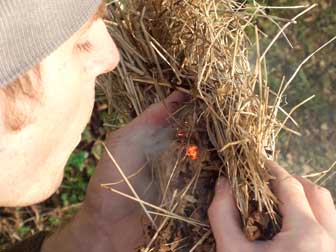
4. Inability to build a fire
One of the most comforting things in the wilds is a cheery campfire. Aside from all the other important functions performed by a fire, keeping you company on a dark and lonely night is among the most important. The companionship of a fire might help keep you from panic, which leads to disaster. So the ability to build and maintain a campfire is a top priority, and failure to be able to do this can be a nail in your coffin.
But besides being a cheerful companion on a gloomy night, a campfire performs vital survival tasks. Because pure drinking water is so important, the ability of a fire to boil water, thus killing all the organic contaminants, is one of the most critical functions. A minute of full rolling boil is sufficient to kill the worst of the bad bugs.
Signaling for help can be performed both day and night by a proper fire. Use the bright blaze at night to show searchers where your camp is located. Carefully feed green foliage into a strong fire to create smoke to show searchers the way to your camp during the day. If you have plastic, rubber, or oil available, burning those things will create black smoke that shows up for a long distance.
Cooking food is another prime function of a campfire, and one not to be taken lightly. By preparing a hot meal at least once per day, your spirits will remain higher and you’ll be putting warmth inside the core of your body to help ward off hypothermia. Hot beverages are also very useful in this regard.
Drying your clothes, and warming your body are obviously of great importance in a survival situation. Taking all these things in combination, it can easily be said that the inability to start and maintain a fire is one of the most severe mistakes that can be made in a survival incident.
5. Inability to signal for help
The worst thing you can do with a survival situation is stay in it as long as possible, just hoping to endure until somebody finds you. Unfortunately, many survival incidents drag on way too long because the individual is not equipped or knowledgeable about how to use signaling methods to call for help.
There are two low-tech types of signals — those you can see and those you can hear. Both employ methods of disrupting the natural environment to attract the attention of someone who is close enough to hear your audible signal, or is within range of a visible signal. A high-tech category of signal is electronic — using a radio or locator beacon to notify someone of your plight.
Store-bought equipment for the low-tech methods are a signal whistle, a mirror, colorful cloth panels, and fire starters. Natural resources that can be used for the same purposes include logs, rocks, branches, strips of bark, snow, the soil, and just about anything else you can find.
It’s obvious what to do with the store-bought gear, but don’t overlook the potential for using natural resources for making signaling devices. Passive visible signals can be created by disturbing the landscape — piling logs or rocks in a pattern that is unnatural, and will therefore attract the eye of a searcher. Trenching the letters SOS in the soil will accomplish the same result, aided by the shadow cast where the soil is piled up alongside the trench. That same method can be used by trenching in snow, or by positioning dark tree boughs on a white field of snow. Anything that disturbs the natural appearance of the ground will help.
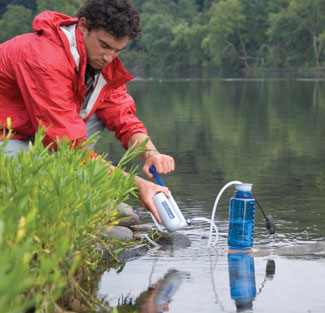
6. Inability to purify water for drinking
The human body can survive a long time without food, but water is another story. Without a constant supply of pure drinking water, dehydration sets in quickly. Along with that come loss of energy, the onset of poor judgment, and the eventual loss of the will to survive. The victim just wants to lie down and not do anything. Dehydration is generally thought of as a warm weather problem, but actually it is easy to suffer the same malady during cold weather. In fact, it’s the very fact that the weather is cold that creates the problem. Cold air is dry, so every breath you take helps dehydrate your body. Being active at high elevation is worse than the lowlands, because of the arid air and the fact that you are working harder and sweating more. But the sneaky thing is that during cold weather you don’t normally feel thirsty, so you actually have to consciously remind yourself to drink.
During periods of hot weather, failure to drink enough water leads past dehydration to heat exhaustion and deadly heat stroke.
Water intake is vital to survival, but making sure the water you drink is pure is also important. Waterborne organisms such as giardia or cryptosporidium can cause severe illness that increases dehydration and reduces your ability to carry on your survival efforts. Boiling water at a rolling boil for a minute or more will kill the organisms. But it is easier to use a quality water filter than to have to stop and build a fire every time you need to purify water. Chemical purification is effective, but requires a period of time to allow the chemicals to do their work before you can drink. And if the water being treated is cold or turbid, extra time is needed.
If you have no way to purify water, you are stuck with the decision to take your chances with illness and drink the water, or refuse to drink and suffer sure dehydration. It’s best to avoid having to make that choice by always being prepared to purify the water you find.
7. Poor clothing selection
If you watch certain reality programs on TV, you might get the impression that a shorts and sandals make good survival clothing. The Hollywood concept of survival is that it’s more important to show off your sixpack abs than to wear a shirt. Nothing could be more wrong. Your clothing is your first line of defense against the elements. It’s your protection against injury from scrapes and scratches as you move through the brush, as well as from bug bites and sunburn. Clothing is your most fundamental shelter, so it must be chosen well.
One of the mistakes some folks make is in choosing the wrong material. There is no question that cotton is comfortable, but wool is more protective and durable. While cotton absorbs and holds moisture next to the body, wool wicks moisture away from the skin and continues to offer insulation value even when wet. This characteristic helps prevent hypothermia.
Outdoor shirts should be long-sleeved, and pants must provide full-length coverage for your legs. This is for protection, not fashion. The sleeves should be able to be buttoned around the wrists to prevent too easy movement of air during cold weather. It’s okay to roll the sleeves up during the heat of the day if there is no risk of injury to the arms, but be aware of the potential for sunburn and take precautions. Zip-off pant legs are handy for times in camp when you want to cool off, and the legs are not at risk of injury, sunburn, or attack by insects. When choosing fabric, remember that dark colors absorb heat from the sun, while light colors reflect the heat.
Head cover is important, and a wide brim hat offers the best protection. And finally, one of the most common mistakes by inexperienced outdoor enthusiasts is the choice of inappropriate footwear. Every move you make outdoors is done on your feet, so wear sturdy trail shoes or boots that fit perfectly and provide adequate support and protection. If your feet or ankles become injured or you come up with blistered feet, you’re done.
When it comes to outdoor clothing, choose practical over fashionable every time. The wilderness isn’t Hollywood, and nobody cares how good you look.
8. Being unprepared to spend the night (or longer)
A survival incident is not fluffy camping, but if you’re prepared with the proper survival kit and some basic knowledge you can at least improve the physical aspect of your living conditions. The basic items that should be carried in a survival kit include an emergency blanket or bivvy, fire making equipment, signaling devices (mirror and whistle), some high-calorie food (Power Bars, GORP, etc.), water filter or treatment chemicals, a good knife, some sturdy line such a paracord, and of course a map and compass.
That’s the hardware, but the software is even more important. In case you’re wondering, the software is in your head. This is the knowledge of how to survive, and the mental preparation for spending isolated time alone facing danger. Without the software, the hardware won’t take you very far. You can’t buy the software at the sporting goods store — it is only available by spending time outdoors practicing primitive survival techniques (that means using only natural resources to solve all your problems), and by gaining enough field experience that you become calm and confident in the wilds. That way, if you are unexpectedly thrust into a situation in which you must spend one or more night out (due to injury, being trapped by bad weather, or getting lost), you can settle into the routine of setting up a survival camp and spending the night panic-free.
9. Failure to file a trip plan — or deviating from a plan that was filed
One of the most common mistakes made by novices and experienced outdoor enthusiasts alike is the failure to prepare a trip plan and leave it with friends and loved ones back home. Those with little outdoor experience probably neglect this out of ignorance, and veteran outdoorsmen probably think they don’t need to go to all the trouble, because they are experts.
The reason to file a trip plan is to let people know where to begin a search operation, if you fail to show up on schedule back home or at work. When people notice that you’re not where you’re supposed to be, they can take a look at the trip plan and begin searching for you where you said you were going to be traveling.
After filing the trip plan, serious problems can develop if you deviate from the plan without notifying the folks to whom you gave the original itinerary. That can throw a search and rescue operation into confusion, as search teams begin the search in the wrong place, based on information in the trip plan.
When creating your trip plan, include the following information: your name, address, phone number; next of kin; where you’re going; the intended route of travel; whom you intend to meet up with or travel with, and their phone numbers and addresses; vehicle description; a description of your clothing and outdoor gear (including colors); pertinent medical needs (so searchers can bring necessary medications).
If you change your plans, always notify everyone who has been given your trip plan.

10. Not stopping to make camp when lost
A dangerous and potentially deadly mistake is to not stop and make camp as soon as you realize that you’re lost, thinking that if you just keep going you’ll get out of the survival situation sooner. The reality is that, when you’re lost you don’t know where you are. And that means you don’t know where anything else is, either. You have no idea which direction to go to reach safety, because you don’t know where you are in relation to that safe haven. So if you keep moving, you might inadvertently be traveling away from your hoped-for safe place. If a search team is on the ground looking for you, you might also be moving away from them, which prolongs and confuses the search. The rule is: when you realize that you’re lost, stop. Make camp and establish some signaling methods in an open clearing where they will be more easily spotted by searchers.
Even if you’re not lost, there is a closely related mistake that gets some folks in trouble. It is the error of not stopping early enough in the day to be able to set up camp before being overtaken by darkness. This leaves you stumbling around in the dark, which risks injury and/or confusion about location. By mid-afternoon, start looking for a good site to make camp on level ground, out of the wind, with an adequate firewood supply and water supply nearby. Get your shelter put together, then spend time gathering enough firewood to see you through the night. Collect and purify enough water for that evening and the next morning. Get a fire started, and then settle down for the night. If you give yourself enough daylight to accomplish all this at a casual pace, you’ll not only avoid injury caused by rushing around in a panic trying to get it all done as darkness is closing in around you, but you’ll also protect your internal energy supply and feel more relaxed.
